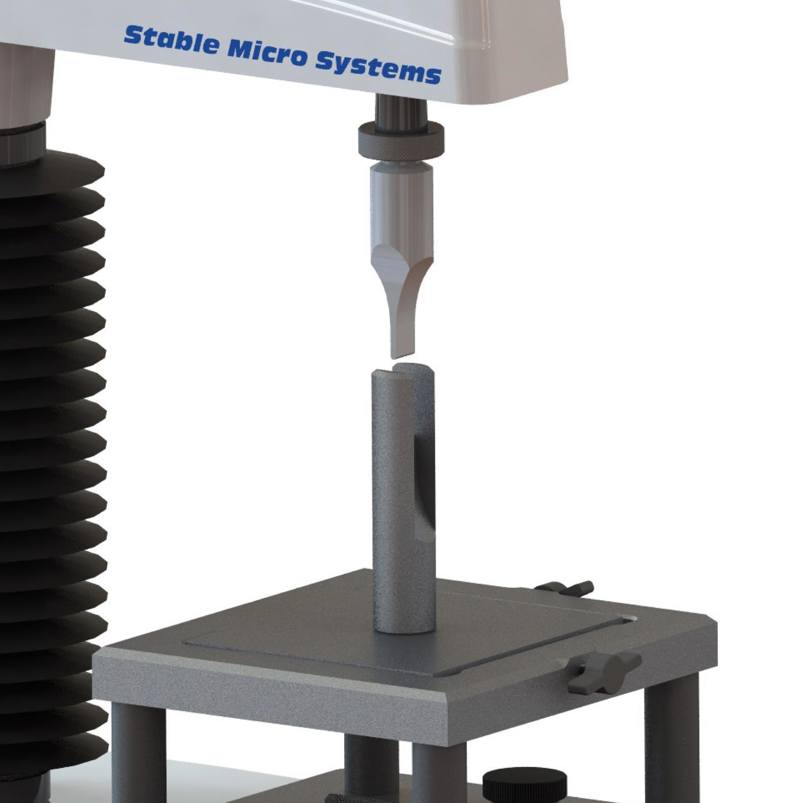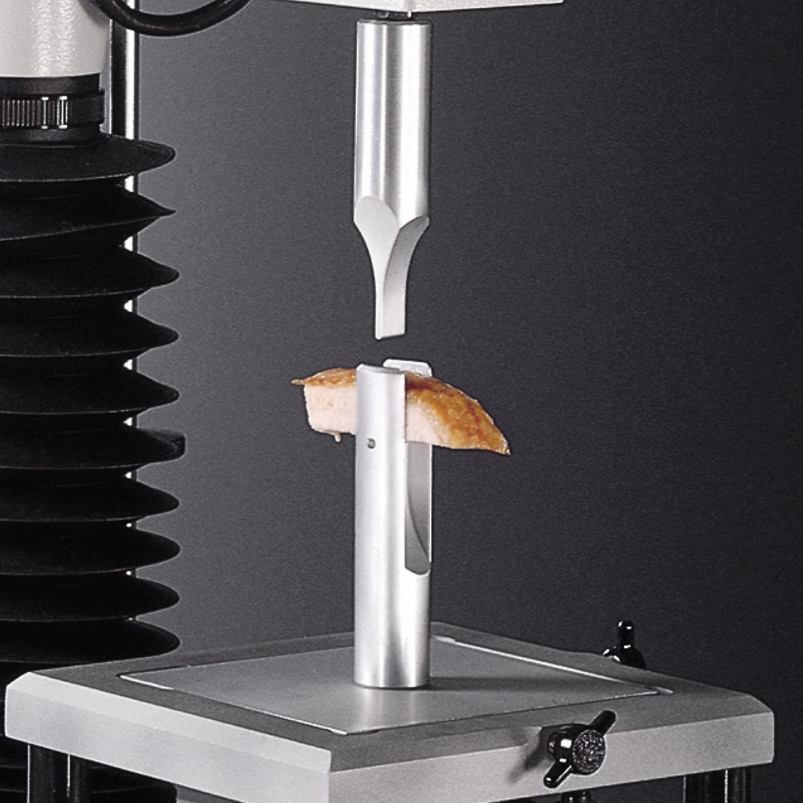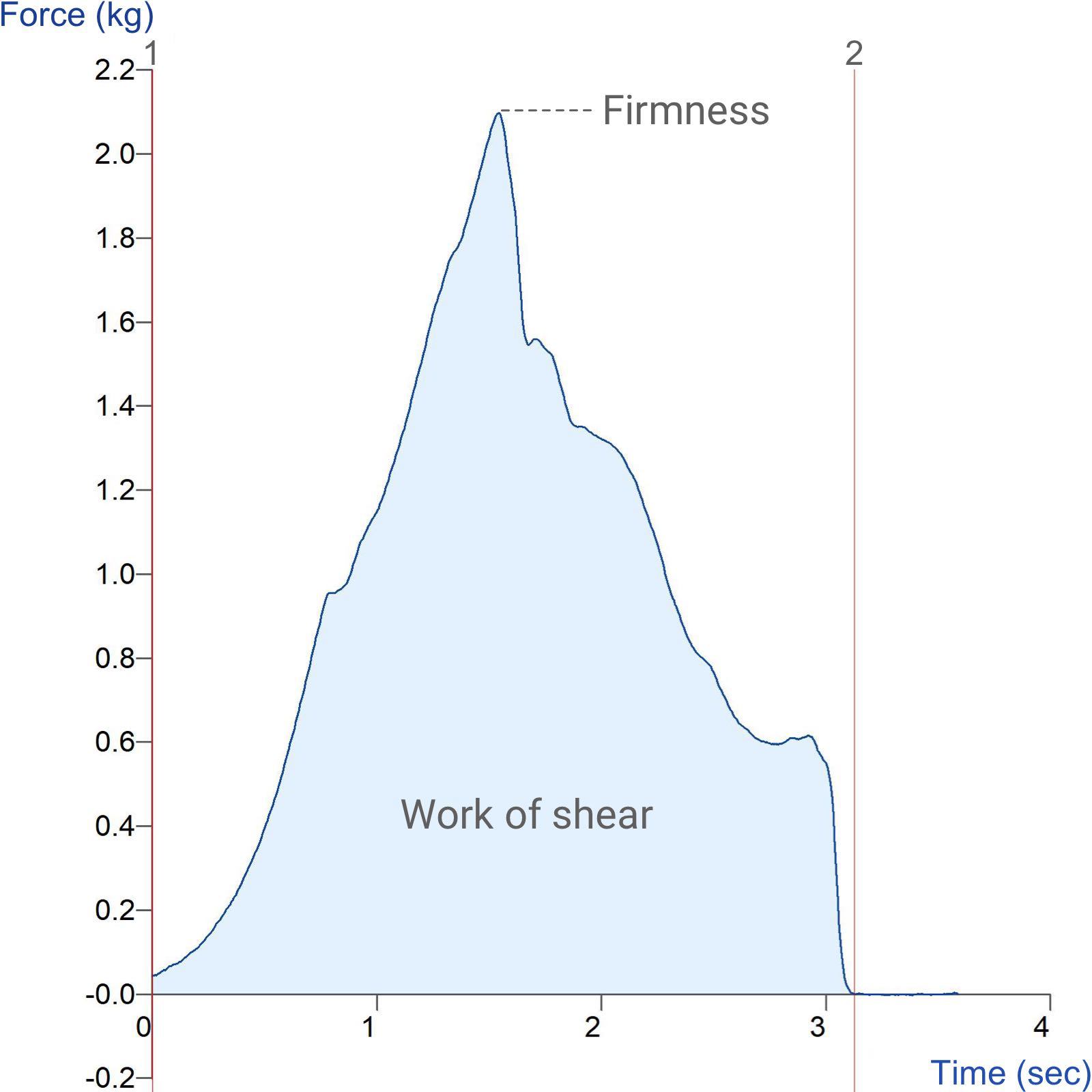Product overview
This attachment performs an imitative test by simulating the action of an incisor tooth biting through food. It comprises of upper and lower jaws which are fitted to the load cell and Heavy Duty Platform. A sample is positioned in the lower jaw and the biting action is provided by the compressive movement of the upper jaw shearing into the test sample. This action correlates well with toughness and provides a compression – shear action on the sample.
This attachment was developed several decades ago to assess the toughness and tenderness of meat and the fibrousness of fruit and vegetables such as rhubarb, asparagus and celery. However, its popularity has declined due to its size which limits the sample cross-section of 1cm² unless the upper ‘tooth’ attachment is used on its own.
How do the Volodkevich Bite Jaws work?
Ideal sample form
This attachment can be used to cut through a sample which is solid and self-supporting. The upper attachment mimics an incisor tooth and in using can therefore represent the force to cut or 'bite' into a sample. The sample size is limited to 1cm² which in many instances is not practical and in most natural practise a product is not bitten by one tooth in isolation.
Benefits and limitations
- Sample cross section is limited to 1cm² which narrows its application
- Samples need to be supported by fingers until upper jaw comes into contact with sample
Technical information
Installation
Full installation instructions are provided within the Education Zone of the latest Exponent/Connect software version and on the technical information sheet accompanying this product.
Chemical compatibility
Stable Micro Systems probes and attachments are commonly made from four materials: anodised aluminium (AA6082 T6), stainless steel (316 T), Delrin (acetyl copolymer) and Perspex (polycarbonate).
In general use, probes and attachments made from these materials will be suitable for testing food products and inert non-food materials.
The four materials listed above are not universally resistant to all types of chemicals and as such the compatibility of the probe/attachment material with the product (to be tested) must be established to prevent damage to the probes and attachments. If the compatibility of the product with the probe is unknown to the customer then the chemical information about the product (Material Safety Data Sheet or Product Data Sheet) should be submitted to Stable Micro Systems. Stable Micro Systems will then assess the suitability of the probe/attachment material for use with the product and advise accordingly. If this advice is not sought then Stable Micro Systems will not accept liability for probes/attachments damaged by chemical attack from the product being tested.
Cleaning and maintenance
All probes and attachments may be cleaned in warm (or hand hot) water using a mild detergent. A soft brush may be used but abrasive cleaning aids should be avoided. Stable Micro Systems products should not be microwaved or cleaned in a dishwasher.
Screw threads should be lightly lubricated after drying using a light lubricant, e.g. petroleum jelly, mineral oil. This will aid the fitting and unscrewing of the item. Each component of a probe or attachment should be wrapped separately when stored, to avoid scratching or chipping. This will safeguard against any unnecessary damage to the accessory.



